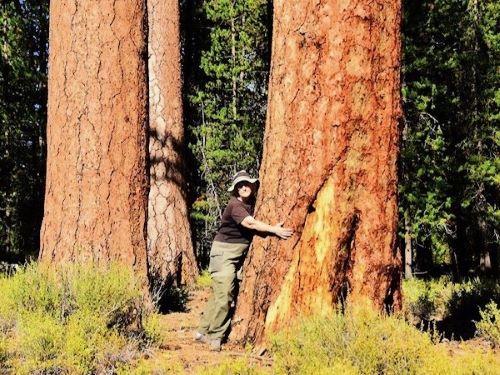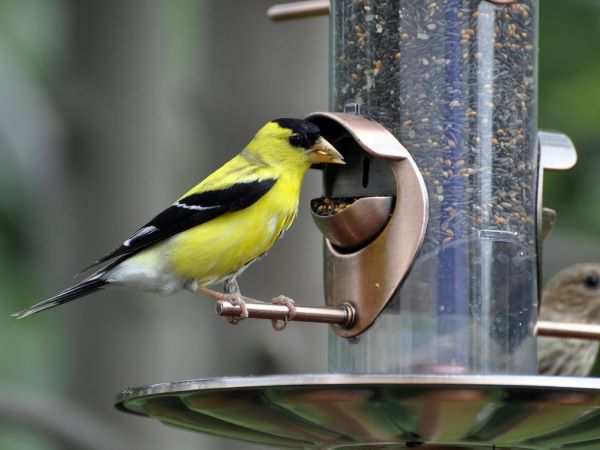Our Habitat Haven volunteers have begun site visits and been enthusiastically received. At the start…
 Did you know that the higher the threat level, the more “dees” chickadees add to their alarm call? A red-tailed hawk, not much of a threat to chickadees, will elicit a relatively short alarm call but the presence of a Northern Pygmy-Owl (which specializes in hunting small birds) will bring forth a long alarm call, with as many as 12 “dees” strung together.
Did you know that the higher the threat level, the more “dees” chickadees add to their alarm call? A red-tailed hawk, not much of a threat to chickadees, will elicit a relatively short alarm call but the presence of a Northern Pygmy-Owl (which specializes in hunting small birds) will bring forth a long alarm call, with as many as 12 “dees” strung together.
Between the new administration and this year’s Congress, many of our country’s environmental regulations are under threat. For example: The Clean Water Act and the Clean Power Plan are being eroded. No more must federal officials consider climate change impacts when making decisions. The administration revoked a rule that prevented coal mining companies from dumping debris into local streams and lifted a freeze on new coal leases on public lands. They proposed that environmental laws be waived when constructing a wall along the US-Mexico border. They chucked a new rule that would have kept endangered whales and sea turtles from getting caught in fishing nets off the West Coast. They are reviewing national monuments (including Oregon’s Cascade-Siskiyou National Monument) to limit requirements for protection. In Congress, they have introduced no less than 25 proposals intended to weaken and eliminate key protections of the Endangered Species Act (including defunding the program and waiving ESA protections in the logging of national forests in the Pacific Northwest and in oil and gas projects.) Chick-a dee-dee-dee-dee-dee-dee…
A less familiar series of regulations that has a similarly huge impact on conservation is currently being debated in Congress. The Farm Bill covers everything from commodities, trade, and loans to nutrition, sustainability, and conservation programs. In fact, it is the largest source of funding in the country for conservation on private lands, which constitute about 1.5 billion acres or two-thirds of the land area in the contiguous United States. The farm bill expires every five years and the next iteration must be determined now in order for it to take effect in 2018.
The 2017 State of the Birds Farm Bill Special Report was released recently by the North America Bird Conservation Initiative (NABCI), a coalition of 28 federal and state agencies, and nonprofit organizations. The Report calls for adequate funding for Farm Bill conservation programs and highlights some of the successes of these programs. Programs with irresistible names like “Sodsaver” and “Swampbuster” work with farmers to incentivize protecting areas of native grassland, wetlands, and riparian vegetation. The program is essential to grassland birds, which are suffering some of the highest rates of population loss. The report showed, for instance, that a strong correlation exists between areas where the farm bill programs are in effect and areas where meadowlark populations are holding their own. Farm bill conservation programs helped to increase populations of several ducks and other wildfowl populations. They allow California’s rice fields to be flooded after harvest to provide habitat for thousands of migratory shorebirds. They reduce soil erosion, water runoff, sedimentation, and nutrient/fertilizer pollution in our waterways. They provide flood protection, riparian buffers, and living corridors for several species. Critical habitat for beneficial insects and birds help farmers with pollination and pest control.
Our entire national economy benefits from more productive farms. The dollars they generate make their way into the local market, directly through payment to farmers and indirectly through an increase in recreational opportunities, including birding. Please urge your representatives to support Farm Bill conservation programs and other regulations that protect our environment.
Citation: North American Bird Conservation Initiative, U. S. Committee. 2017. The State of the Birds 2017: A Farm Bill Special Report. Cornell Lab of Ornithology, Ithaca, NY



